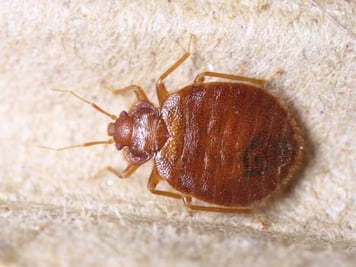Checking Out the Science Behind Bed Bug Heat Treatments as a Lasting Insect Management Approach
In the world of insect monitoring, the pursuit for efficient and lasting solutions stays a constant quest. One such method that has actually gained traction in the last few years is the usage of warmth therapies to combat bed insect infestations. By taking advantage of the scientific research behind thermal fatality factors for these relentless bugs, warmth therapies supply an appealing option to typical chemical-based approaches. The intricacies of just how heat properly eliminates bed insects and the wider ramifications for lasting bug management techniques make this a topic worth discovering better.
Bed Bug Heat Treatment Process

Thermal Death Factor for Bed Insects
Exposing bed bugs to elevated temperatures beyond their thermal tolerance variety is vital for attaining reliable obliteration in heat therapy procedures. By getting to and keeping temperature levels above the thermal fatality point for bed bugs, bug monitoring specialists can make certain detailed elimination of bed bug populaces, including hard-to-reach areas where chemical treatments may be much less reliable. Recognizing the thermal fatality factor for bed pests is essential for implementing successful warmth therapy methods and accomplishing lasting parasite administration outcomes.
Benefits of Warmth Treatments
Having developed the crucial thermal fatality factor for bed bugs, it is necessary to now explore the substantial advantages that warm therapies provide in successfully eradicating these durable parasites. One of the main benefits is that heat can permeate deep right into gaps and splits where bed pests hide, making sure that also the most hard-to-reach areas are heated to deadly temperature levels.
Furthermore, heat treatments are ecologically friendly and non-toxic, making them a sustainable bug monitoring strategy. Unlike chemical pesticides, warm therapies do not leave unsafe deposits that can pose risks to human health and wellness or the environment. This element is especially essential in sensitive environments such as healthcare facilities, colleges, and houses where chemical use may not be desirable.
Additionally, heat treatments have a high success rate in eliminating bed bug infestations in a single therapy, reducing the need for numerous visits and minimizing disruption to occupants. This efficiency not just conserves time and cash however likewise offers satisfaction to those managing bed insect issues.
Efficiency of Heat Therapy

Research studies have actually consistently shown the effectiveness of warmth treatments in achieving a high price of bed bug death. Correctly performed warm therapies can reach all the holes and fractures where bed pests may be nurturing, guaranteeing a thorough method to elimination. Additionally, warmth treatments have actually the included benefit of eliminating bed pest eggs, which are commonly immune to conventional chemical therapies. On the whole, the effectiveness of warm therapies in eradicating bed insect problems makes them a lasting and reliable insect monitoring strategy.
Sustainable Pest Management Advantages
Implementing sustainable parasite monitoring techniques uses long-lasting benefits for both the environment and public wellness. By making use of techniques such as warm treatments for pest control, we can reduce the dependence on dangerous chemical pesticides that can have negative effects on communities and human health - exterminator. Lasting bug management approaches have a peek at this site assist in preserving biodiversity by targeting specific bugs without hurting non-target microorganisms, consequently preserving a well balanced environment
Additionally, lasting bug management methods add to the total health and health of the public. By decreasing exposure to hazardous chemicals used in typical insect control approaches, heat therapies provide a much safer choice for insect monitoring in domestic, business, and public rooms. This decrease in chemical use also assists in avoiding pesticide deposits from infecting air, dirt, and water, safeguarding environmental top quality.
Conclusion
To conclude, bed pest heat treatments have been revealed to be a sustainable and efficient parasite management technique. The thermal fatality factor for bed bugs makes them vulnerable to warm therapies, which have countless advantages over conventional chemical check it out treatments. The efficiency of warmth therapies in eliminating bed bug infestations while lessening ecological influence highlights the possibility of this method as a sustainable solution for insect control.
The bed insect warm treatment procedure includes increasing the temperature level within ravaged locations to a degree that properly removes bed pests and their eggs. By getting to and keeping temperature levels over the thermal fatality factor for bed insects, bug monitoring experts can make sure detailed removal of bed insect populations, including hard-to-reach areas where chemical treatments might be much YOURURL.com less reliable. One of the key benefits is that warm can permeate deep into holes and splits where bed insects hide, ensuring that even the most hard-to-reach areas are heated to dangerous temperature levels. Unlike chemical therapies that may leave behind resistant populaces, warm treatments offer a non-toxic and eco pleasant option that can permeate deep into furnishings, walls, and other hard-to-reach locations where bed insects hide.
The thermal fatality point for bed bugs makes them at risk to warm treatments, which have numerous benefits over conventional chemical treatments.